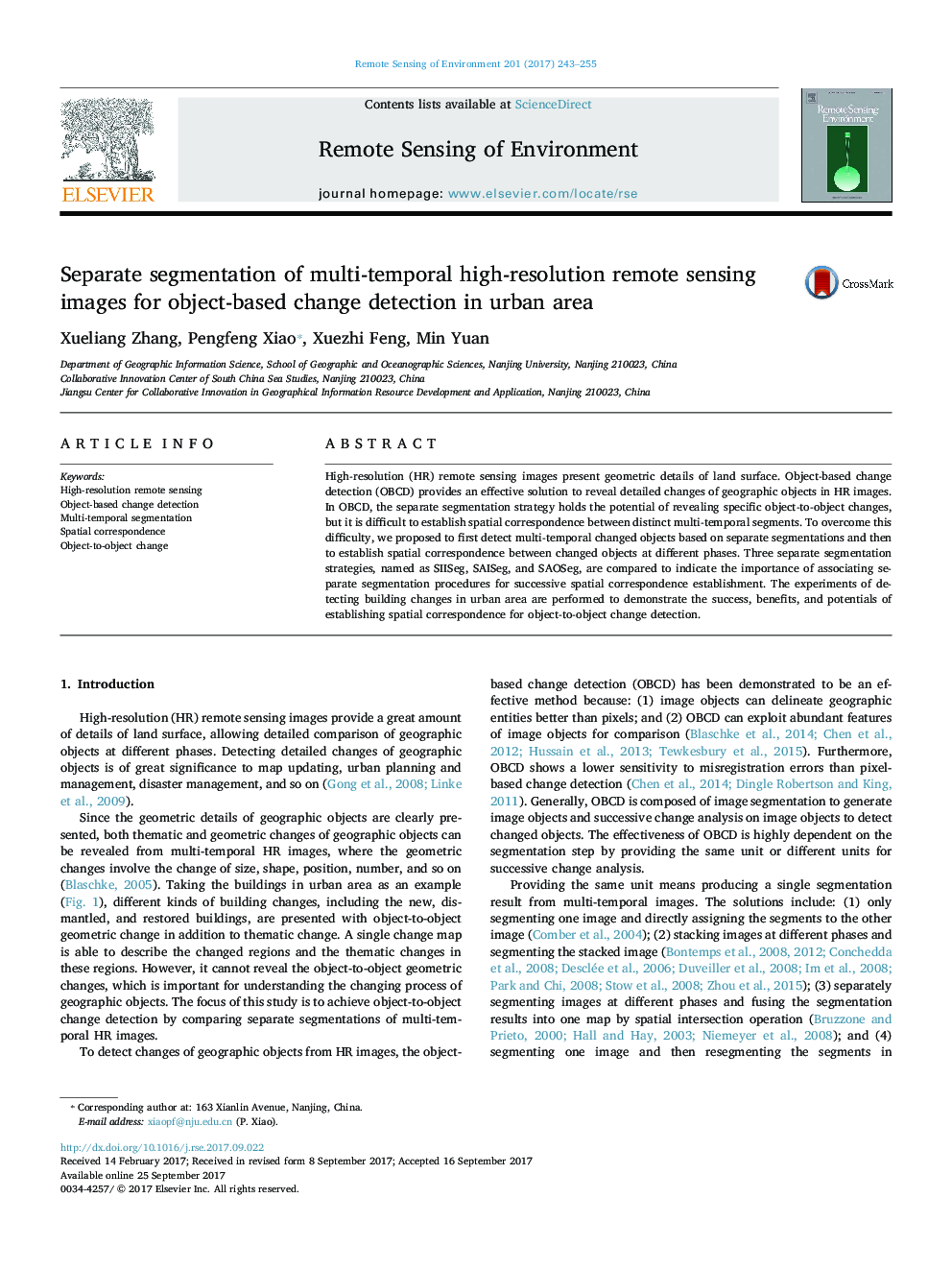| Article ID | Journal | Published Year | Pages | File Type |
|---|---|---|---|---|
| 5754668 | Remote Sensing of Environment | 2017 | 13 Pages |
Abstract
High-resolution (HR) remote sensing images present geometric details of land surface. Object-based change detection (OBCD) provides an effective solution to reveal detailed changes of geographic objects in HR images. In OBCD, the separate segmentation strategy holds the potential of revealing specific object-to-object changes, but it is difficult to establish spatial correspondence between distinct multi-temporal segments. To overcome this difficulty, we proposed to first detect multi-temporal changed objects based on separate segmentations and then to establish spatial correspondence between changed objects at different phases. Three separate segmentation strategies, named as SIISeg, SAISeg, and SAOSeg, are compared to indicate the importance of associating separate segmentation procedures for successive spatial correspondence establishment. The experiments of detecting building changes in urban area are performed to demonstrate the success, benefits, and potentials of establishing spatial correspondence for object-to-object change detection.
Related Topics
Physical Sciences and Engineering
Earth and Planetary Sciences
Computers in Earth Sciences
Authors
Xueliang Zhang, Pengfeng Xiao, Xuezhi Feng, Min Yuan,
